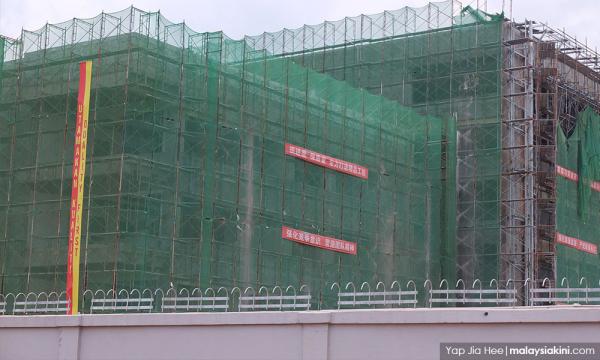SPECIAL REPORT | The Gebeng Bypass, which links Jabur in Terengganu with Gebeng near Kuantan Port, has always been a mundane drive, with kilometre after kilometre of greenery since it opened in 2006.
But beginning 2013, a section of the highway in Gebeng, a small town 25km north of Kuantan, has seen an explosion of activity, with 1,219 acres of land cleared and large-scale construction in full swing.
A new ramp diverges from the Gebeng Bypass to the cleared land, which is now known as the first phase of the Malaysia-China Kuantan Industrial Park (MCKIP).
A huge four-storey building under construction sits adjacent to the circular ramp, which is protected by an eight feet tall wall. Satellite images show the wall spanning around the entire project site, with an estimated length of at least nine kilometres.
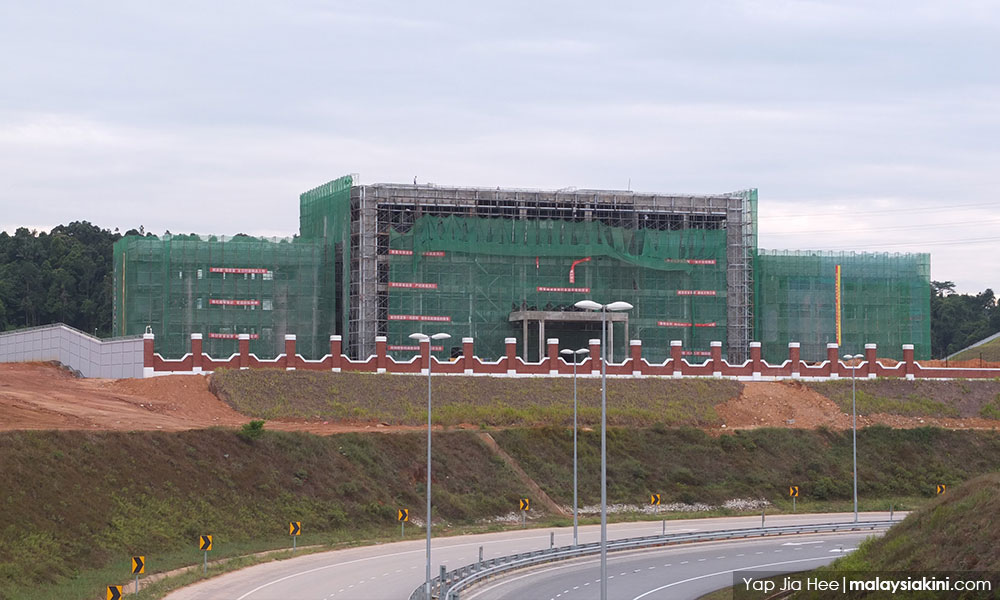
For the local folk, the dull grey wall topped with steel hooks, with the exception of certain sections which are brick red for aesthetic purposes, has come to be referred to as Kuantan's "Great Wall of China".
The wall is not exceptional, but its apparent purpose of keeping those inside separate from the outside world has fuelled speculations among the local community.
The regular folk of Kuantan are not allowed within the walls without the approval of the site's administrator. The small number of locals who are allowed in are those who have business dealings inside.
The main entrance, which is the only entry point for the time being, is strictly manned by guards in white uniforms from a local private security firm, as well as by guards from China, who don black uniforms.
The best glimpse people outside can get of what's inside are the buildings under construction that tower over the wall, with many Chinese motivational slogans being hung over the green safety nets that are typical of construction sites of companies from China.
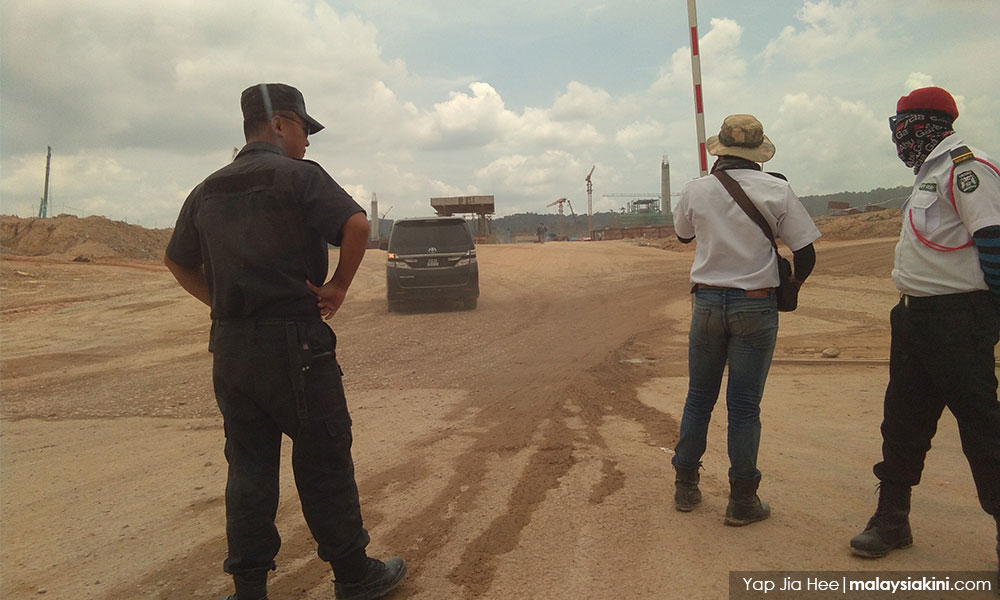
These observations have given rise to talk among the local community that a China enclave has been carved beyond the wall.
Assemblyperson denied entry
Teruntum assemblyperson Sim Chon Siang had applied to MCKIP to enter the site, in an attempt to dispel the speculations, but he was rejected. Instead, MCKIP sent two representatives to meet Sim outside the industrial park.
Officially launched on Feb 5, 2013, MCKIP is 49 percent owned by Guangxi Beibu Gulf International Port Group Co Ltd, a China company owned by the Guangxi Autonomous Region government, and the remaining 51 percent is owned by a Malaysian consortium - Kuantan Pahang Holding Sdn Bhd.
Kuantan Pahang Holding Sdn Bhd is a public-private partnership comprising IJM Land Bhd (40 percent), Sime Darby Property Bhd (30 percent) and the Pahang government through Perbadanan Setiausaha Kerajaan Pahang and Pahang State Development Corporation (30 percent).
The grand opening was graced by Prime Minister Najib Abdul Razak and the then chairperson of the National Committee of the Chinese People’s Political Consultative Conference, Jia Qinglin.
Divided into three phases, the current 1,219-acre development will be followed by another 1,000 acres and 800 acres in Phase Two and Phase Three, respectively.
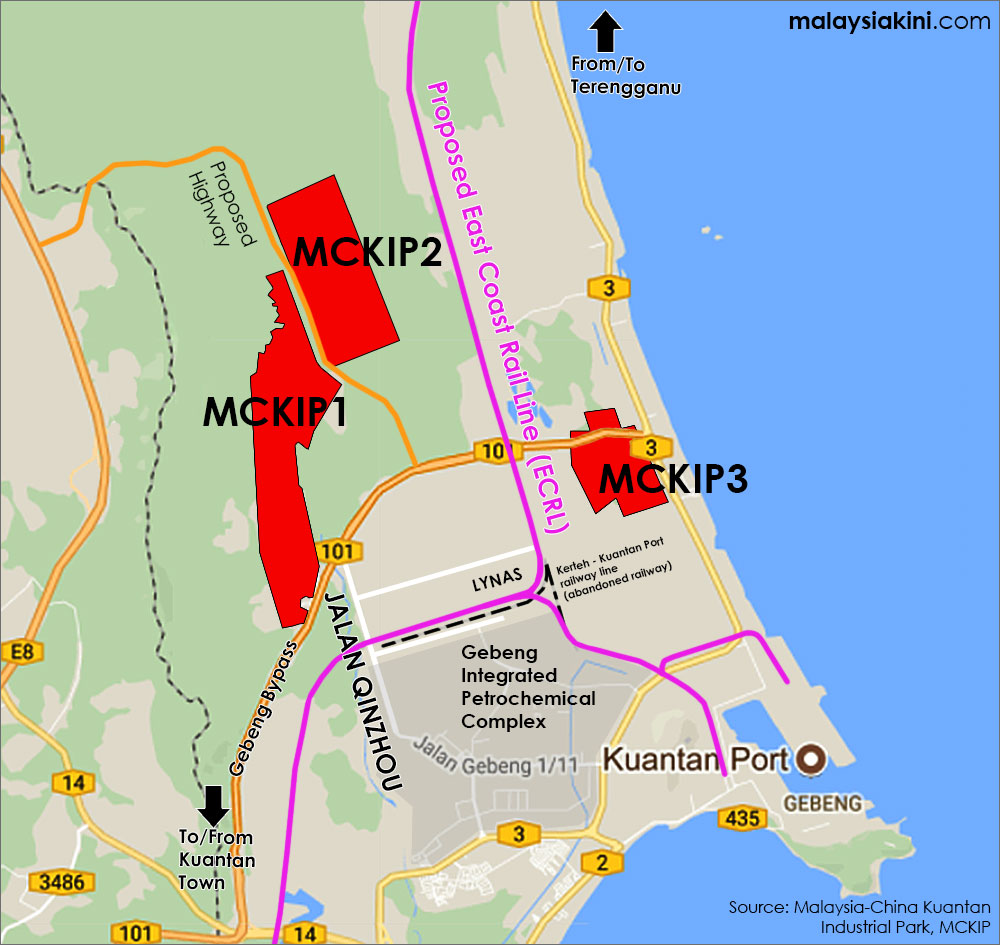
A large part of the first phase, or 710 acres, has been sold to Alliance Steel (M) Sdn Bhd, a joint-venture between two China entities - Guangxi Beibu Gulf Port International Group Co Ltd and Guangxi ShengLong Metallurgical Co Ltd - according to a Pahang state assembly written reply dated Sept 14.
The written reply said Alliance Steel, the first China company to invest in MCKIP, is building a modern integrated steel plant, which is already 50 percent completed and is expected to commence operations by the year-end.
The Pahang government also revealed that a China company specialising in car batteries has promised to invest in Phase Three of MCKIP. Media reports also say another China company will be investing in the industrial park to construct an aluminium factory.
MCKIP was the first project to be granted "National Industrial Park" status and has been touted as a booster for local economic growth that will create thousands of new jobs for the Kuantan folk.
But more than four years on, the local community is starting to grumble that this promise has yet to be met.

As the assemblyperson of the constituency where the MCKIP is located, Sim (photo) has been following the issue closely because of the many inquiries and complaints he has received.
The city beyond the wall
Describing MCKIP as a "closed city", Sim said it was nothing like the other industrial parks in greater Kuantan, such as the Gebeng Industrial Park and Semambu Industrial Park, where people are free to enter and the walls or fences are only confined to the individual factories or company buildings.
"We were looking forward to the first phase of MCKIP at the beginning, but now the construction is almost done and we have yet to see any major changes in Kuantan.
"The most important is to increase local employment opportunities so that young people can stay in Kuantan.
"We hope MCKIP can grow the Kuantan economy instead of walling themselves inside - like a Federal Territory - and we know nothing about what is happening inside," Sim told Malaysiakini when met in Kuantan.
Having failed to secure permission to visit MCKIP, Sim turned to the Pahang state assembly, where he questioned the state government on the composition of the workers on site.
The Pahang government, in a written reply on Sept 14, said during peak periods, a total of 6,000 construction workers were employed at a ratio of three foreign workers to two local workers.
This puts the number at 3,600 foreign workers and 2,400 local workers working on Phase One of the MCKIP. The state government did not specify whether the foreign workers were from China or other countries.
The state government said the composition was necessary to ensure the factories can be completed and commence operations on time for the benefit of the local community.
It added that the materials used for the construction were 50 percent local and 50 percent from China.
Beyond the official responses from the state government, the happenings beyond the wall remain a mystery, both to the elected representatives and to the people of Kuantan.
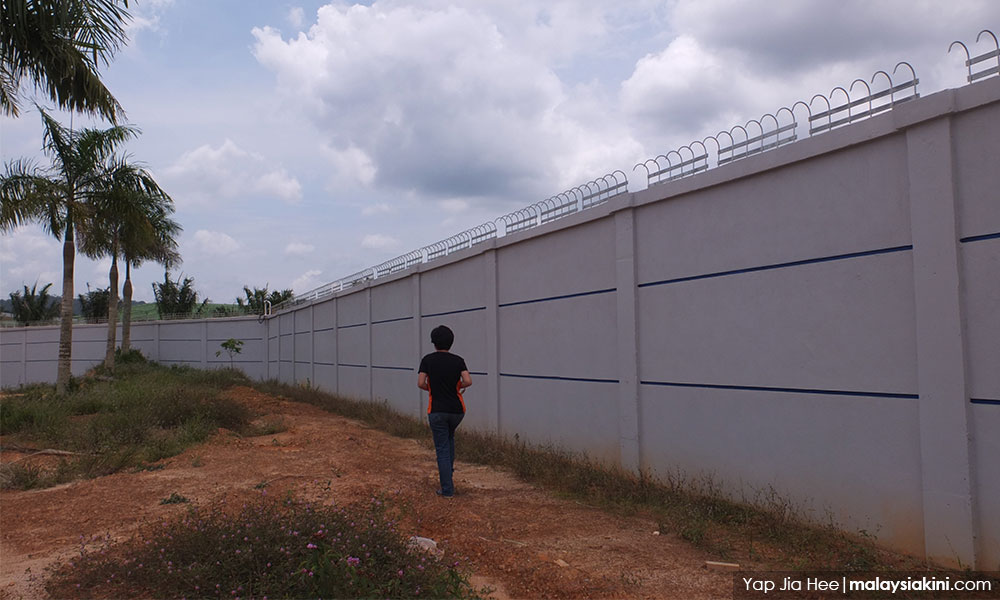
During an impromptu visit to the MCKIP, Malaysiakini journalists were also denied access.
Malaysiakini has written to MCKIP and the East Coast Economic Region (ECER) to apply for a formal visit and has yet to receive a response at the time of writing this article. MCKIP and ECER have also not responded to requests for comment.
However, Malaysiakini managed to speak to several people, local and Chinese citizens, who work or live within the walls of the MCKIP site.



